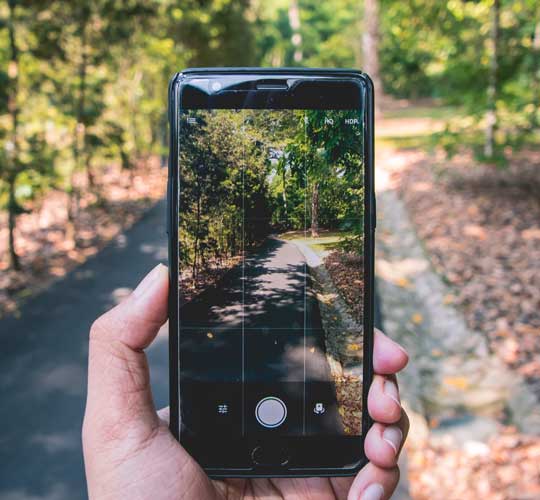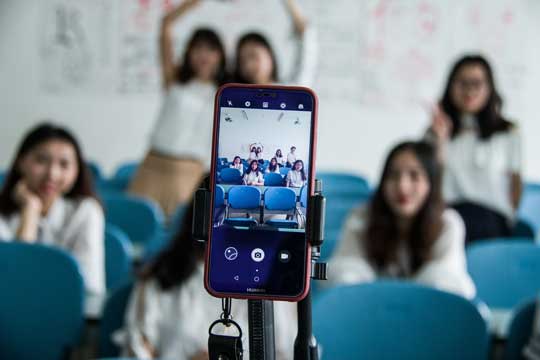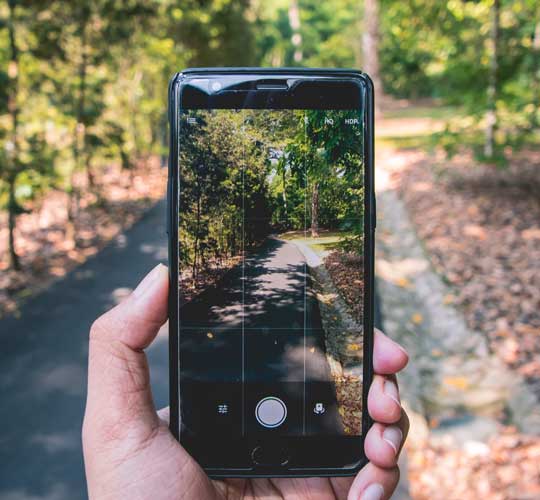There’s no denying that smartphone cameras have come a long way since their grainy, low-res origins. The photos they produce are getting better and better, to the point where many people forgo a digital camera altogether. So it begs the question: is there still a place in your bag/pocket for a stand-alone camera?
For serious or enthusiast photographers and filmmakers with advanced needs and/or expectations, the answer is an obvious yes. But for those who just like to document their daily life—from social gatherings and family milestones to pets, concerts, holidays and sunsets—the answer requires a little more consideration.
The Value of a Memory
We tend to reach for a proper camera to capture special, scheduled occasions, like an overseas trip or a loved one’s wedding. But what about those once-in-a-lifetime events that happen unannounced – a child’s first steps, a brush with fame, or some extraordinary natural phenomenon? And those moments which, sadly, we don’t realise the value of until long after they become memories?
Somehow recording these memories is the main thing, and that requires a camera—one with sufficient power, storage and capability. If you want to do your memories any justice, that camera will also need to be capable of showing things in their best light.
Smartphone Cameras: The Ultimate in Convenience
The biggest advantage of smartphone cameras is convenience. As part of your phone, they take up no extra weight or space. If you (like many people) habitually keep your phone close to hand, its camera is always within easy reach when photo opportunities strike. Any photos you take with your phone are instantly shareable and, if you’ve configured things right, automatically backed up.
With so many people glued to their smartphones these days, it’s arguably easier to keep a low profile when photographing with a phone. While a camera might draw attention anywhere other than popular tourist spots, no one’s likely to bat an eyelid at a phone.

Stand-alone Cameras: The Upper Edge
Despite smartphone cameras’ numerous benefits, however, there are many ways in which dedicated cameras still have the upper edge.
– Image Quality
If something’s worth photographing, it’s worth photographing well. Surely you want to recall all the colours and details of a magnificent view, an extraordinary feat, or a smiling face as you saw it, free from disappointingly fuzzy edges and grainy detail? Regardless of your skill level, a quality stand-alone camera makes this job much easier.
One of the biggest factors determining image quality is a camera’s sensor size. (This is different from resolution, measured in megapixels/MP, which determines how large you can print or how much you can crop a photo without losing quality). The bigger a camera’s sensor, the more light and image detail it can take in. This results in sharper and less blurry/pixelated details, whether captured in bright or dim conditions. A larger sensor also enables shallower depth of field, which softens backgrounds to greater emphasise in-focus subjects – popular for portraits, food shots and artistic images.
Today’s top-of-the-line smartphone cameras feature 1/2.5” or 1/1.7” sensors (measuring 5.6 x 4.2mm or 7.6 x 5.7mm, respectively). While these are impressive by mobile phone camera standards, they’re matched by those in old/basic point-and-shoots and 2.5 to 4 times outsized by those in more capable (yet affordable) point-and-shoots.
Another contributor to image quality is stabilisation. Stand-alone digital cameras often feature an optical or sensor stabiliser designed to reduce blur caused by camera shake, a common side-effect of following fast action or shooting in low light or with a long lens. To minimise bulk and cost most phone cameras employ digital stabilisers, which degrade picture quality.
– Power & Storage
Taking lots of photos and videos quickly consumes a smartphone’s battery and memory, which things like apps, music, and system updates are constantly competing for.
A separate camera not only eases this power/storage burden but also does so with far more efficiency. Most digital compact cameras can shoot hundreds of photos and/or sizeable video files per charge, allowing you to, say, take as many travel snaps or film as much of an event as you like with little, if any, interruption.
– Zoom
A major advantage of stand-alone cameras (over smartphone cameras) is zoom. Most digital cameras (be they compact cameras or DSLRs) utilise optical zoom, meaning the lens physically moves forward to zoom in on a subject. In contrast, the majority of mobile phone cameras employ digital zoom, which uses software to essentially enlarge and crop a subject – a process that substantially reduces the quality of photos.
Optical zoom is steadily becoming more common in smartphone cameras, with really advanced models offering up to 5x optical zoom (and a future one promising 10x optical zoom). But these still don’t compare in either reach or quality to the zooms of compact travel cameras, which often exceed 20x or 30x optical zoom. You’ll need at least these kinds of specs if you want to capture any moderately distant subject—be it a performer on a stage, a sports player mid-game or a wild animal in its habitat.
– Creative Control
To photograph things as you envisage them, you need a decent degree of manual control. Some higher end smartphones allow you to tweak exposure settings such as shutter speed and aperture, which help produce creative and professional-looking effects such as wispy ocean waves and soft, dreamy portrait backgrounds, respectively. On the other hand, virtually all but the most budget compact cameras will provide this level of control.
– Versatility
Unlike smartphones, digital cameras have one primary function: to take photos. So it shouldn’t surprise anyone that, in general, they still outdo smartphones in many photographic scenarios, from capturing moving subjects to shooting in dim or challenging light and photographing macros. So if you enjoy getting shots of the kids and/or pets at play, competitive sports, lively shows/events, backlit portraits or landscapes, or closeups of food or flowers, you’ll get much more satisfying results from a dedicated camera.
– Editing
Cameras will also deliver much more satisfying results if you ever want to edit your images. With myriad photo editing apps available, there’s certainly no shortage of editing options for smartphone users. The issue is that small image files captured on small sensors—i.e. most smartphone photos—can hold up to only so much manipulation. Larger image files (e.g. RAW format) captured on larger sensors—i.e. most camera photos—have much more visual data to play with, enabling you to rotate/straighten an image, brighten shadows, enrich colours, etc. without deteriorating the picture’s quality.
– Design Benefits
Of course, those aren’t the only ways in which digital cameras make an easier job of photography. While you might need to reach awkwardly up or down to compose your shot with a smartphone, a camera with a tilting screen lets you do the job hassle-free. A viewfinder overcomes the challenge of shooting in bright sunlight. Some cameras are made for extreme conditions, so they can survive all kinds of adventures (and misadventures). And though you might think twice about holding your phone over the side of the boat or the edge of a mountain in order to take a photo, a camera’s humble wrist or shoulder strap offers solid peace of mind.
– The Verdict
The best camera you have is the one that’s with you. While oft-repeated, this adage couldn’t be more true. Life’s unpredictability makes it hard to guess when a photo or video opportunity will arise, so it’s ideal to have a camera handy whenever possible. Smartphones are a fantastically convenient and portable option. Despite this, photos/videos are often easier to actually get with a stand-alone camera, which offers superior power, storage and suitability for shooting many subjects in many situations.

The exponential improvement in smartphone camera quality over recent years makes it possible to get stunning results with a tap of the touchscreen. However, this applies mostly when you’re photographing static subjects in bright light, don’t need to zoom and/or aren’t overly concerned about image quality or creative control. When it comes to shooting movement, zooming in and capturing things as you see or imagine them, a dedicated camera is still the best tool for the job.
Written by CameraPro staff writer Belinda Crossman
